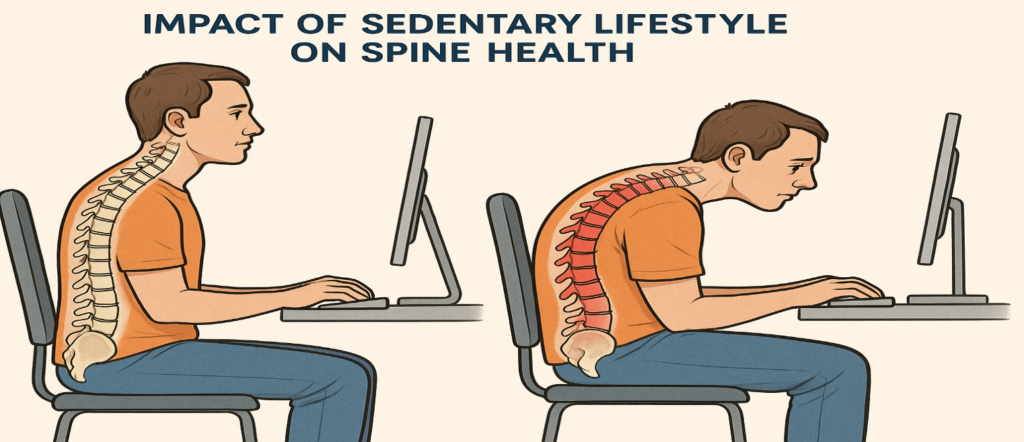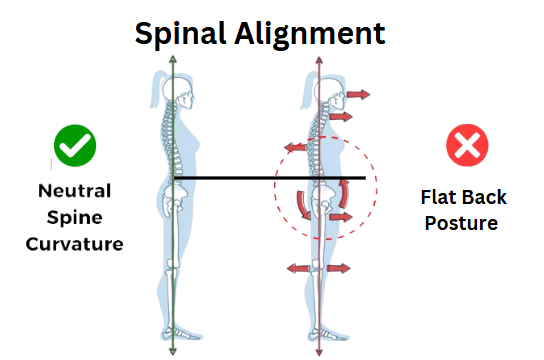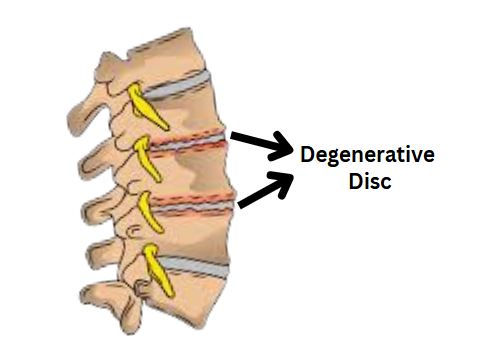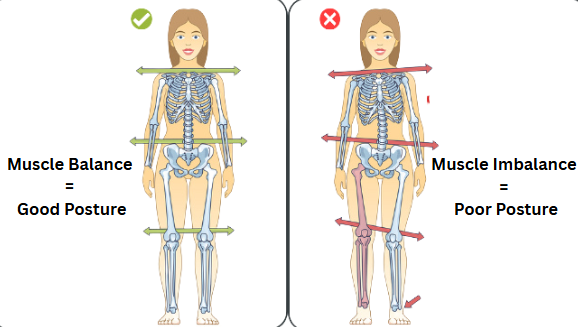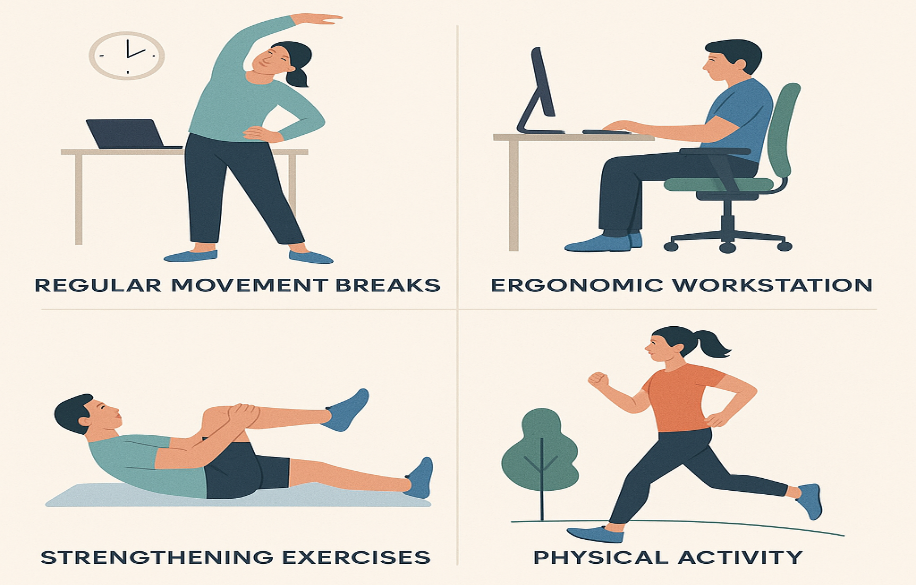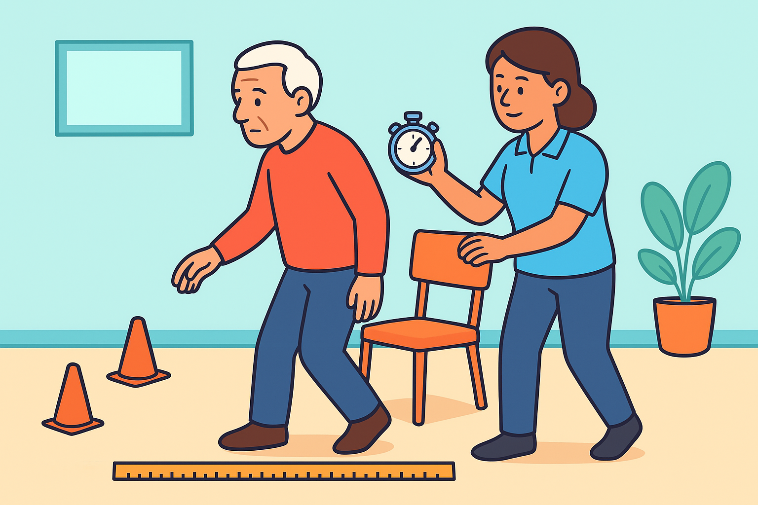A sedentary lifestyle, characterized by prolonged periods of physical inactivity, particularly sitting, has become increasingly common due to the nature of modern work environments and digital entertainment. While its negative effects on general health, such as increased risk of obesity, cardiovascular disease, and diabetes, are widely acknowledged, the Impact of a sedentary lifestyle on spine health is equally critical and often overlooked.
1. Spinal Posture and Alignment:
Prolonged sitting, especially in poor posture, places significant stress on the spine. Most individuals tend to slouch or lean forward while seated, which can lead to postural imbalances such as forward head posture, rounded shoulders, and exaggerated lumbar lordosis. Over time, these deviations from natural spinal alignment can cause structural changes, leading to persistent discomfort, musculoskeletal dysfunction, and long-term spinal deformities.
2. Intervertebral Disc Degeneration:
The intervertebral discs, which act as cushions between the vertebrae, rely on regular movement to facilitate the exchange of nutrients and fluids. In a sedentary state, this natural disc nourishment is compromised. Reduced mobility can accelerate the dehydration and degeneration of these discs, increasing the risk of disc bulges, herniations, and associated nerve compression, which may manifest as chronic back pain, sciatica, or numbness in the limbs.
3. Muscle Weakness and Imbalances:
Physical inactivity contributes to the weakening of essential muscle groups, particularly the core, back extensors, and gluteal muscles, which play a vital role in maintaining spinal stability. Concurrently, sitting for extended periods often results in the tightening of hip flexors and hamstrings. This muscular imbalance alters pelvic alignment and increases mechanical stress on the lumbar spine, further exacerbating lower back discomfort and postural issues.
4. Reduced Flexibility and Joint Mobility:
Lack of regular movement leads to joint stiffness and decreased flexibility in the spine and surrounding structures. This limited range of motion not only restricts daily functional activities but also increases the likelihood of injury from sudden movements or physical exertion. Over time, reduced spinal mobility can contribute to conditions such as facet joint syndrome and spinal osteoarthritis.
5. Increased Risk of Chronic Pain:
Numerous studies have established a correlation between sedentary behavior and the development of chronic musculoskeletal pain, particularly in the lower back and neck regions. Static postures maintained for prolonged periods increase the load on spinal structures and reduce circulation, resulting in muscle fatigue and inflammation. Without intervention, this can lead to persistent pain and reduced quality of life.
6. Impaired Circulation and Inflammation:
Sitting for long durations impairs blood circulation, particularly in the lower body, and can lead to pooling of blood and reduced oxygenation of spinal tissues. This not only slows down tissue repair and regeneration but may also promote systemic inflammation, further contributing to spinal discomfort and degenerative changes.
Preventive Measures and Recommendations:
To mitigate the adverse effects of a sedentary lifestyle on spine health, the following measures are recommended:
Regular Movement Breaks: Stand, stretch, or walk for a few minutes every 30 to 60 minutes.
Ergonomic Workstations: Ensure that seating supports the natural curve of the spine, and that monitors are positioned at eye level to prevent neck strain.
Strengthening Exercises: Engage in exercises that target core and back muscles to support spinal stability.
Stretching Routines: Regularly stretch the hip flexors, hamstrings, and spinal muscles to maintain flexibility.
Physical Activity: Incorporate at least 150 minutes of moderate aerobic activity per week, complemented by resistance training.
Conclusion:
A sedentary lifestyle poses serious threats to spine health, contributing to poor posture, muscle weakness, disc degeneration, and chronic pain. By understanding these risks and adopting proactive strategies such as movement breaks, ergonomic adjustments, and regular exercise, individuals can significantly improve their spinal health and overall well-being.
About Authors
Dr. Muhammad Mahmood Ahmad is a Spinal as well as an Orthopedic Surgeon with over 14 years of experience currently practicing at Razia Saeed Hospital, Multan.

